[Free E-book] Agile PricingTM:
The Must Have Framework
for Modern E-tailers

Introduction
A general lack of suitable information on pricing is one of the major reasons we wrote this book. It may be possible to find anything about pricing and pricing strategies online. With that said, if you were to try to apply them to your business, you will come to the point where all these posts are more or less fragmented, and do not entirely fit your particular business goals.
The second reason is our vision of the future of eCommerce. We’re very forward looking and quite frankly, a large proportion of our predictions come true. For example: Last year, we wrote about chatbots in online retail and also about a huge seasonal holiday battle for a customer. After a short while, we came across this announcement — Proof positive that we were not mistaken on both predictions: Nordstrom launched a chatbot for holiday sales.
Yet the future of online retail is closer upon us than it could possibly appear in any forecast. It will rarely be forgiving to any Category, Product or Pricing Manager who spends more than 20 hours per month on repricing. Nor will it offer safe haven to businesses that are not able to achieve planned KPIs. Sleepless nights are in store for C-level management of retailers who scale their human resources or decrease assortment instead of growing their AI or machine learning. The future is coming now.
We know retail will change dramatically over the next few years, and we want our existing and potential clients to prepare and get ahead of those changes.
Archaic VS. Modern Pricing
There was, and still are a lot of ongoing speculations about the best pricing strategies that should be used by every retailer (cost-, discount-, limit-, competitor-based pricing…You name it!). The retail leaders of the market know that one can’t use these strategies independent of each other, and likewise, from the general business strategy either.
Old, supply driven pricing is nearly dead. The shopper’s role having seriously increased over the last few decades to proclaim a new era of demand, technology and competition driven pricing. Success is based more on the ability to balance on these external factors.
Today only those who implement new unconventional pricing logic will win the battle for customers’ attention.
The foundation of this approach, is that all processes and results in an e-commerce company are connected to the customers’ price perception, and thereby to the retailer’s’ pricing strategy.
To build a successful retail business, you need to switch from the old-fashioned pricing described above to a new one:
- The general goals of the business should consider consumers’ demand and the competition’s offerings. The prices should then be set and they will determine the forecast of future sales.
- Future sales determine the purchasing or manufacturing scope.
- As a result, you’ll get the planned sales profitability based on the price.
So if we will compare the old and new pricing approaches visually, they will look like this:


This approach facilitates the achievement of any desired business goal. Profit growth, market share — whatever you’re looking to gain.
Keep in mind that the price affects not only sales, but all processes within the company. Therefore, e-tailers’ pricing should always consider all business stages:
- Product category planning (depending on a product’s line quality and defined variety of customers’ price expectations)
- Purchasing model (how quickly the product range can be updated, how high the quality of inventory management is, etc...)
- Supplier merchandising (supplier’s selection for specific products, brands, categories that the retailer has to offer defines the level of sales that can be achieved)
- Marketing communications the way the company forms consumer’s price expectations and their willingness to pay a higher price, or conversely, perking customers’ shopping interest during a sales period.
This new pricing approach we have described is based on new customers’ behavioral patterns when any kind of information (including the prices of any shop worldwide) is just a few clicks away. This holds true for offline retail as well.
This means that now retailers more than ever before need to manage their prices effectively, along with reducing their additional expenses of any kind (time spent on the repricing process or decision making, quantity of people involved, etc...) Even more so — the best way to deal with this challenge is to control and change prices automatically.
So today’s efficient pricing is an automated pricing that gives retailers an option to act immediately within multiple parameters when any possible market alert arrives, saves employee time and company costs and while forecasting future sales: just a perfect implementation of Agile Pricing!
Agile Pricing
This is one of the most effective pricing strategies on the market today. By our definition, Agile Pricing is pricing that adapts to every market change automatically, yet can easily be corrected by a manager.
It allows a retailer to connect its pricing strategy with its business goals by setting up predefined rules (scripts for price changes). It can be adjusted by the manager if necessary or automated (fully or partially, for example, with conventional Category Manager moderation). The biggest bonus of this strategy is that it reliably works, no matter where the retailer’s products are, whether at the supplier’s or within the retailer’s own stock
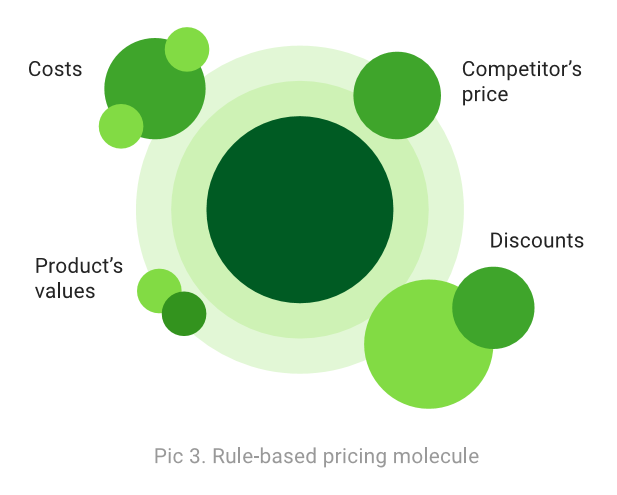
There are many advantages of this strategy:
- Ability to combine all positive parts of any of the existing pricing strategies
- The retailer gets complete control of its goals (any pricing rule can be applied to achieve them)
- Gives an open field for experiments of any kind, when the retailer can easily calculate the impact of tiny price changes
But we are also well aware of the controversial “point for agile pricing” usage.
It’s difficult to implement for the company with smaller revenues (read “small or young company”) because it needs a huge amount of the managers’ time to be applied effectively.
To apply this strategy, you need to allocate resources to implement it, use tools to check and compare competitors’ prices (including their promo’s, seasonal discounts, etc...) and to set up all the scripts that will change prices according to desired scenarios and goals. This includes: costs, discounts, customer perception research results on different items (values), etc...
Yet even this disadvantage can’t hide the benefits of this strategy, which any retailer in any industry, can apply. Just imagine that you are able to build custom rules that offer you an ability to make any pricing decision automatically according to long-term goals, comparing them to profits that can be gained in the short-term and grow all metrics that need to be grown. Those decisions are based on your company’s costs, customer’s price perception, and competitor’s prices.
Bringing Agile Pricing Into The Game
There are only two basic steps that need to be completed before agile pricing can be implemented: a general business strategy and a demand curve.
Use of any pricing strategy separately from the business’ strategy is like designing a house before finding a plot of land, or planning a wedding without any romantic partner on the horizon: It can be done, but the final result may be totally opposite of what was originally planned. We’re pretty sure you already have a strong and reciprocal business strategy, yet we need to mention this for retailers who are just starting to discover the new world of pricing strategies who also may be reading this book.
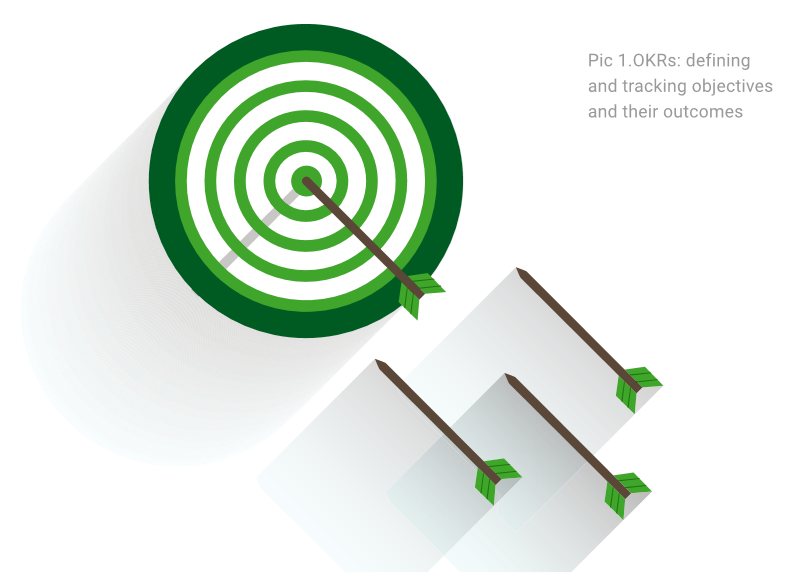
The second important component of agile pricing, is to deal with the demand curve. You need to know the real demand curve of your customers before you apply agile strategy because this is the only way you can play within the boundaries of the demand shift. Otherwise, any changes in shoppers’ income, behavioral trends, or related goods can unexpectedly affect sales.
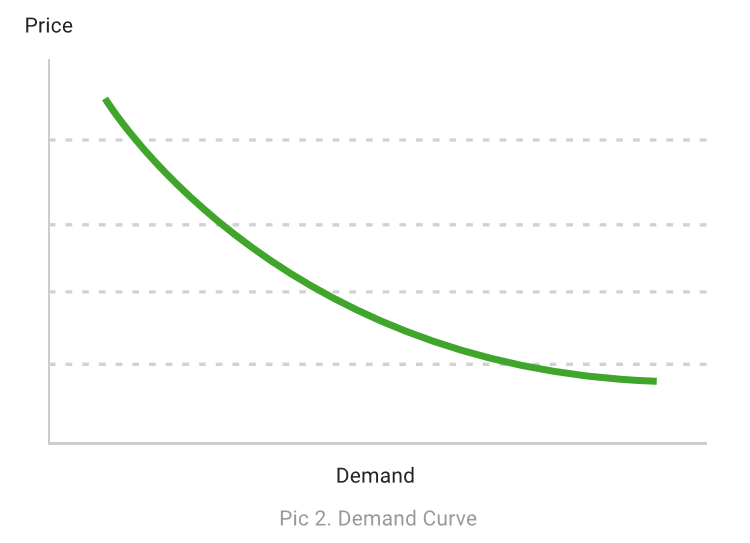
Of course it is possible to use agile pricing without the demand curve but remember that it is a component of value-based pricing (one of the strategies that can be used within agile approach).
Beware Of Real Competitors
Let’s start from key competitors. They are not necessarily those who you think of first as your competitors. This is a good place to leave the business of prediction forecasting to the bandana-wearing astrologers. Key competitors of any retailer in the world are those who actually affect sales. To spot them, you need to retrospectively check whose actions influenced your sales the most. Also, to choose them, you need change how you treat your data.
Correct, clean, full and timeliness of data you can rely on, is another important component of implementing agile strategy. It seems obvious, yet not many companies can really boast of it. If you are part of a highly competitive industry, such as Electronics & Computers, Toys & Hobbies, etc... This part is definitely a ‘must have’ for your business.

In order to get this information, you need to collect some data about their prices and activities. The data should fit into several components:
Clean data. Data needs to be taken directly from the competitor’s website and not from market places where this competitor sells its goods.
Timeliness data. There is no sense in analysing a competitor promos’ impact if you’re grabbing their data only once a week, and they change their prices or add promos daily.
Correct data. Your competitor (or you) can have millions of items on the website. You only need to monitor the parts that corresponds yours.
Rich data. Price is not enough anymore. You also need to be aware of stocks, promos, and all varieties of your competitors’ inventory.

Rules Examples For Different Retail Types
Now, after you have laid out a general business strategy, demand curve and competitor information, you are ready to build pricing rules for your business.
The choice is hardly dependent on the general business strategy and other associated conditions (i.e. market specific properties like customer habits of paying by cash). Here are a few examples that have been applied by different retail businesses, yet almost all of them include a retailer’s need to get a better return on inventory investment or win market share through optimized pricing.
The examples of discount rules which can be used include:
- Loss leaders discounts, dedicated to increased traffic in the store, e.g. if KVI-products are higher than competitors’, reduce price 1% lower.
- Discounts on orders of a minimum spend, e.g. for minimal spend more than $200, give them $20 off.
- Large quantity discounts, e.g. every similar item added to the cart to reduce the price for $1.
- Seasonal discounts for customers used to buy stuff during offpeak, etc...
- Promotional discounts, offering temporary advantages, etc..
- Gender discounts, such as 15% off men’s t-shirts
- Etc...
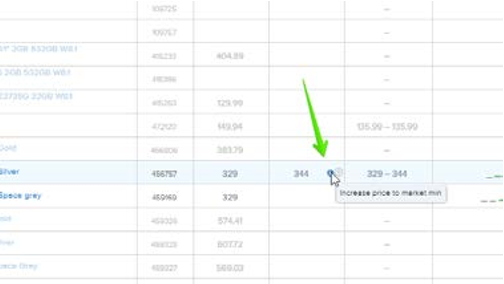
Just remember that the pure discount path is only available for those retailers who have chosen to be a discounter. In other cases some of these rules can be easily used along with other rules by anyone who can effectively cut costs, get the best prices from suppliers, and wants to raise their market share.
You can rarely bump into a pure “discounter” nowadays. Mostly discounts are a common tactic of any retailer. In this case they can take the best of these approaches while avoiding its disadvantages. So you can mix all the rules according to the current KPIs (margin, share, etc...). Actually, the variety of rules that can be applied by mixed-type retailers is really pretty vast.
On a higher level it could be rules built upon competitors, inner retailer metrics, categories of products, etc... Yet, if you were to dig deeper, there would be many more options based on dozens of conditions or dependencies.
Here are some popular rules used by mixed retailers.
- All assortment prices should be lower than all competitors’ prices.
- The Apparel category should be cheaper than the same category of competitor A.
- Prices shouldn’t be lower than the vendor’s’ MAP.
With that said, using them separately is out of date in a modern market’s competitive field. Therefore, more complicated rules are quite handy. Think of the IFTTT approach if you need to rely on a few conditions before repricing:
- If an item is cheaper than $1K, then it should be cheaper than a competitor’s’ item for 5%. Yet if it costs more than $1K, it should be cheaper than $10.00. For both scenarios, price should be decreased by $0.01 to follow for the ‘odd’ psychological pricing.
- If competitor monitoring shows some items as “out of stock”, then we’ll raise the price by 5%.
- We will keep the middle prices for a particular group of products and for another group we’ll keep the minimum prices. Still, the competitors’ and our own prices will be checked daily in the morning, to make sure we are doing well.
Don’t forget that these examples are just some of the possible rules you can apply to your pricing. The main goal is to create credible rules and keep their usage simple.
Note: A fairly common mistake e-tailers make, is a markdown reaction when their competitor launches some promotional activity (not discount) like free shipping. This leads them to loss of margins.
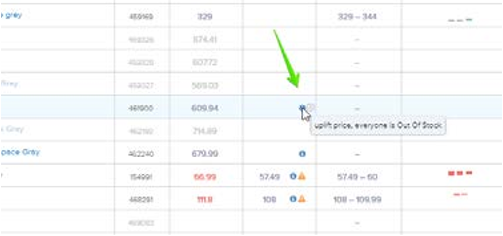
Pricing Automation
Agile pricing can help you gain ROI easily. Yet the biggest issue is not the setting of repricing rules by itself but applying them to the inventory automatically. Some time ago we became acquainted with a retail company where the Category Manager was using an Excel Spreadsheet a few times per day to check the rules before applying them. They had been using so many rules it was impossible to keep them all straight.
Along with a few quick changes in online retail that could take place few times a day, to get the most out of agile pricing, it needs to be automated.
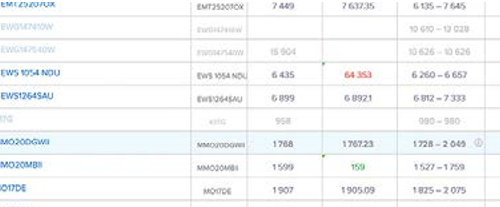
Especially in cases where the rules are complex, when it could be a real mess to apply them manually (just imagine the manual repricing nightmare within the previously mentioned rule ”We decided that some group of products will keep a middle...”).
In Competera Price Intelligence Solution, you can add any repricing scenarios, monitor your competitors, find out whose activities have the most influence on your sales by using the Price Index report and set up any automated rules for your products, and for as many of your products as you may need. This approach gives your managers a chance to focus on emergencies, or alerts, or other important tasks instead of just the routine. As a direct result they become so much more productive and achieve their KPIs.
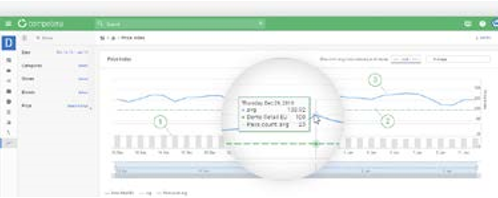
Efficiency Monitoring
In a data driven world you need to monitor your pricing efficiency as diligently as you would your marketing, because pricing affects sales as much as the landing page quality or traffic sources (or even more so). Therefore it becomes a good idea to connect all the active processes within your company (marketing, sales, stocks, repricing) in a single place to track their efficiency, flawlessly.

If you have never tried it before, imagine a dashboard where you can visualise the entirety of your sales progress by category, brand or individual item, in application with each active promo, competitors prices, stocks and promos all together with repricing suggestions against market any changes.
This helps the Category Manager control prices on a whole new level. If you note that some of the KPIs are not going to be achieved, send an alert to change the rules (algorithms), not the prices of the separate category or single item.

Usage of such the solution gives retailers a possibility not only to react to the market changes but to predict and forecast future sales (as we spoke about earlier in this e-book).
Summary
In this e-book we discovered one of the most efficient pricing strategies yet, agile pricing, and provided several examples for different retailers.
Nevertheless, to see its real efficacy, it is not enough to simply read this book. You need to apply it to your online shop and measure its results with the most important universal retailer KPIs, such as Sales Growth, Average Profit Margin, Sales Target, and Product Performance. Keep in mind that any of the aforementioned metrics may need to be set according to the general business goals.
Also keep in mind that agile pricing is a must have, leap forward, for all modern retailers. Before it will serve you and do any good, you can’t do the next step to onboarding a prediction and prescriptive based pricing, which we’ll talk in our next book. If you want to join an “early bird” community of those who’ll get this book before its official launch, please fill out a short form here. As we have observed from our clients’ metrics, agile implementation gives a 3-15% growth. The actual percentage is dependent on the business stage, Category Managers’ qualification, etc...
Pricing is extremely important for e-tailers today. Still, what’s even more important is how it fits with business goals and other company processes, and how it affect the workflow of a particular manager.
So, if you are going to rocket your pricing, you will need to choose a solution that will help you do it. Before you choose a Price Intelligence Solution for your business, ask your future supplier a few questions:
- Do they provide an SLA for data quality?
- Is it possible to adjust the monitoring schedule to your business needs?
- Can you use your specific tags for managing the items (brand tags, ABC tags, etc.) in the dashboard?
- What options for integration with third party services do they have?
- How exactly will it help your online store to optimize the workflow (Price Intelligence, Price Index, etc.)?
- Is there an ability to synchronise the results with the shop’s virtual showcase?
Pricing is an infinite subject that you can delve into endlessly. However, doesn’t mean that you shouldn’t try. Here are some links that will help you master this topic:
Highbrow: Price Psychology
Coursera: Pricing Stratey
Quora: Pricing Strategy
Udemy: How to Price Your Product Or Service (With Confidence)
Udemy: Small Business - Pricing your Products or Services
To check whether Competera Price Intelligence Solution fits with your business.
To request a demo and speak to a Competera pricing expert, please, fill out the form and we will contact you within a few hours.
If you still have any questions regarding this e-book, or any of the described strategies, do not hesitate to contact us.
You can easily find anything about pricing and pricing strategies online. Yet, if you try to apply it to your business, you’ll come to the point where all these posts are more or less fragmented and don't really fit your particular business.
In this book we discuss the differences between archaic and modern pricing approaches; describing Agile PricingTM methodology; giving examples of how any retailer can apply this approach for marketing and pricing strategies.
Download pdf with the content above
to send it to colleague or friend






